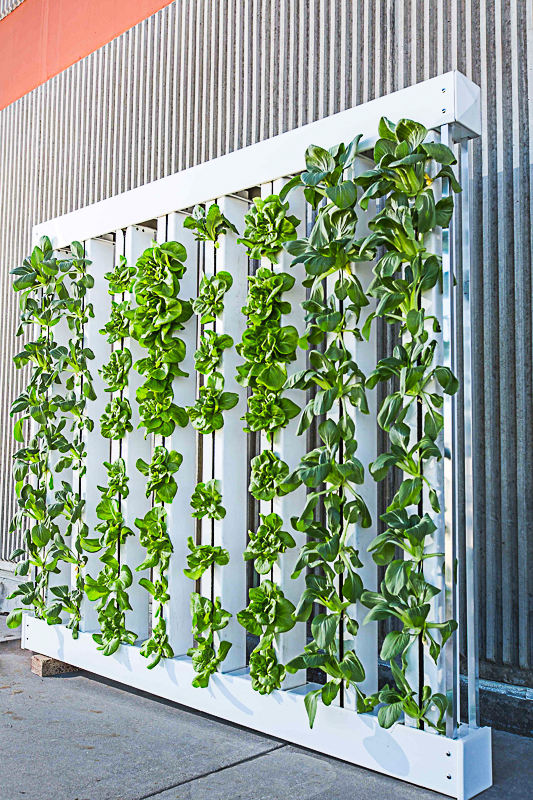One of the first considerations when creating your own garden is choosing between hydroponics vs. soil gardening. Getting to know the similarities and differences between these two gardening methods is important. In this post, we’ll walk you through key element of both to help you decide which is best for you.
*This post contains compensated links. Find more info in my DISCLAIMER. As an Amazon Associate, I earn from qualifying purchases.
Want to start a hydroponic garden at home easily? Check out our recommendations for Best Hydroponics Starter Kits for Beginners.
What Is Hydroponics?
Hydroponics is growing crops in a nutrient-rich solution or soilless media such as vermiculite, perlite, sand, and coconut fiber. As the name indicates, roots develop in a water nutrient solution instead of soil. This solution provides all the required nutrients to the plants.
Depending on the type of crop you are looking to grow, you can purchase prebuilt kits or build your own DIY hydroponic setup. In terms of crops to crops, the best hydroponics plants include tomatoes, spinach, lettuce, strawberries, and cucumbers.
Benefits Of Hydroponic Growing
Hydroponics allows you to practice vertical farming, where you grow plants in stacked rows in a smaller place. The process is easy to monitor because the systems are automated; hence, it wastes your time. Hydroponics requires less water to grow making it ideal in areas with scarcity of water.
Growing plants using hydroponics is generally faster than in soil. It’s possible to double the harvest of a crop in a growing season. Crops such as lettuce can be harvested twice as fast in hydroponics compared to lettuce grown in soil.
Hydroponic growing is super versatile. You can grow crops hydroponically indoors or out as well as in harsh climates. When growing indoors, ensure you have quality grow lights to provide enough UV light for your plants. Another plus to hydroponic growing is the lack of weeds. With no soil, it’s very difficult for weed to take root. Weeds primarily show up in the soil. Without weeds, your plants will have enough nutrients to produce a bountiful harvest.

Hydroponics – The Future Of Growing Now
I believe soil is good. It’s been the preferred method of growing since humankind first planted seeds. While growing in soil has many benefits, we need new and innovative ways to feed a growing population. Thanks to hydroponics it’s now possible to grow food in areas where it’s nearly been impossible. Looking at hydroponics vs. soil growing, hydroponics offers more advantages and is quickly become the preferred method of growing.
DIY hydroponics is an easy-to-construct process. All you need are hydroponic equipment such as plants, plant clips, PVC pipes, a 50-gallon nutrient tank, plastic tubing, clay pebbles, planting cups, trellises, and stands.
Alternatively, you can opt for a hydroponic kit. Most kits come with nutrients and instructions to be followed when feeding plants and a PH reducer to control PH levels. Most of these kits do a lot of work, such as keeping light on a timer and watering plants automatically.
A hydroponic grow box, a rectangular enclosure, is used to house your plants, especially those grown indoors. They often comprise all the essentials needed to grow plants indoors, ranging from watering systems, lights, growing media, and ventilation systems.
Benefits Of Growing In Soil
Soil is a natural resource and a perfect choice of Mother Nature to grow crops and produce food. There are fewer maintenance practices for soil-grown plants due to the slow-growing process. Soil retains more valuable flavors for vegetables and fruits.
The Disadvantages Of Soil Gardening
The growing cycle in soil gardening is a slow process, unlike hydroponics, where harvesting can be done twice in a crop’s growing season. There are frequent pest and disease attacks in soil gardening if the soil is not well-maintained. Animals such as rabbits may also be detrimental to soil-based plants. Soil gardening requires more space to grow crops in the garden beds than hydroponics, which is grown vertically. The yield in soil gardening is slightly lower than that of hydroponics because of a slow or delayed growing cycle.
5 Key Differences Between Hydroponics Vs. Soil Growing
There are a handful of key differences between hydroponics vs. soil gardening. Hydroponics requires a nutrient-rich solution or soilless media such as perlite and vermiculite to grow crops, whereas soil gardening basically requires soil as a growth medium. Minerals used in hydroponics are fast release and are absorbed faster hence faster growth and maximum yields. In soil gardening, minerals are slow-release, and the growth rate is slower than hydroponics.
Nutrients in hydroponics are directly delivered to the plant roots. This ensures that the plants receive the right amounts of nutrients at the right times. Contrary to that, plant roots in soil gardening have to search for nutrients. This is the reason why plants in soil gardening have larger root systems.
Hydroponically grown plants do not require any pesticides because they have natural anti-pest and anti-fungal buffers. On the other hand, regular pesticide application is needed for soil-based plants to achieve the same results. Consuming chemically-produced plants has side effects on our health.
Hydroponics saves a lot of space, thanks to vertical gardening. Plants can be stacked on top of others to save more space, unlike traditional soil-based gardens.
Hydroponics Vs. Soil Growing For A Home Garden
Looking at the benefits and demerits of hydroponics vs. soil, you will be able to make an educated choice on which method suits you and your garden. Some experts prefer using both methods, and they do exceptionally well. However, this depends on one’s budget too. Soil gardening is less expensive compared to hydroponics which requires a lot of input in purchasing the systems and power inputs in systems that require electricity.
Hydroponics gives more yields in a fast turnaround, saves a lot of water, and plants produced are free from chemicals. However, there are also notable demerits of hydroponics. On the other hand, soil gardening is a natural resource that needs less effort to set it up, requires less technical expertise, and retains valuable natural flavors.
Is Hydroponics Faster Than Soil?
Plants grown in hydroponics grow faster than plants grown in soil. The growth rate is 30%-50% faster, and it is highly noticeable.
Within the first few weeks of growing, you will notice that they do much better than soil. If you notice the plants are not doing well, you need to change the nutrient solution.
FAQs – Hydroponics Vs. Soil Gardening
Hydroponic growing systems offer several advantages to growing in soil. One of the biggest is space. If you are limited in outdoor space, it’s still possible to grow vegetables in a smaller and in many cases, indoor space. For this reason, a hydroponic system is better than soil.
In addition to taking up less space, hydroponic gardens use less water compared to soil-based gardens. On average, plants grow faster in a hydroponic garden. With all this in mind, it’s fair to say that hydroponic gardening is better.
Hydroponic growing systems are complex for new home gardening. Growing in soil involves fewer moving parts and experience. While both systems of growing have their advantages, neither is easier.
